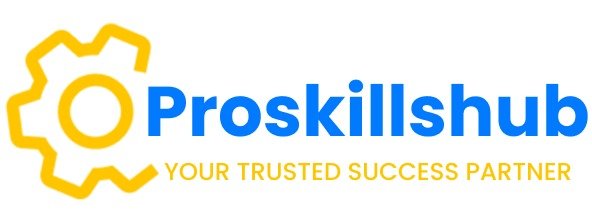In today’s fast-paced digital landscape, businesses thrive on efficiency, connectivity, and customer-centricity. Salesforce, the world’s leading CRM platform, empowers organizations to manage customer relationships effectively, while MuleSoft, a top-tier integration platform, specializes in connecting applications, data, and devices. Together, Salesforce and MuleSoft form a powerful combination that simplifies business processes, integrates systems, and unlocks new levels of operational efficiency.
This article explores how integrating Salesforce and MuleSoft can help organizations streamline their operations, enhance customer experiences, and drive business growth.
What Is Salesforce?
Salesforce is a customer relationship management (CRM) platform that allows businesses to manage sales, marketing, customer service, and other critical operations from a single, unified system. Its scalability, ease of use, and extensive customization options make it the go-to solution for organizations of all sizes.
With Salesforce, companies can:
- Track customer interactions across multiple channels.
- Manage sales pipelines and leads.
- Streamline marketing campaigns.
- Enhance customer support with a 360-degree view of client data.
What Is MuleSoft?
MuleSoft is an integration platform that simplifies connecting applications, data sources, and devices through APIs (Application Programming Interfaces). With its flagship tool, the Anypoint Platform, MuleSoft enables businesses to build reusable APIs that integrate on-premise systems, cloud applications, and legacy databases seamlessly.
MuleSoft offers:
- API-Led Connectivity: A structured approach to connecting applications and data.
- Drag-and-Drop Integration Tools: Simplified tools for building complex workflows.
- Scalability: The ability to support integrations as businesses grow.
- Enhanced Security: Robust measures to protect sensitive data.
Why Should You Integrate Salesforce and MuleSoft?
Connecting Salesforce and MuleSoft allows businesses to unlock the full potential of their CRM while ensuring seamless data flow across various platforms. Here are some of the key reasons why organizations should consider this integration:
- Unified Data Across Systems
Salesforce excels at managing customer data, but most businesses rely on multiple systems like ERP (Enterprise Resource Planning), marketing platforms, and databases. MuleSoft serves as a bridge between Salesforce and these systems, ensuring that data flows seamlessly and is always up-to-date.
- Enhanced Customer Experience
With Salesforce and MuleSoft working together, businesses can gain a 360-degree view of their customers by integrating data from various touchpoints. This allows for personalized customer interactions and quicker problem resolution, enhancing overall customer satisfaction.
- Streamlined Workflows
Integration helps automate repetitive tasks, such as updating records or generating reports. For example, customer data entered into Salesforce can automatically be reflected in the ERP system, eliminating the need for manual data entry.
- Scalability and Flexibility
As businesses grow, their need for integrations increases. MuleSoft’s API-led connectivity approach enables organizations to scale their operations without having to rebuild existing integrations, saving time and resources.
- Real-Time Data Syncing
One of the most significant advantages of integrating Salesforce and MuleSoft is the ability to sync data in real-time. Whether it’s updating customer details or processing transactions, businesses can ensure that their systems are always aligned.
- Cost and Time Savings
By automating processes and connecting systems, companies save both time and money. Employees can focus on high-value tasks instead of manual data entry or troubleshooting disconnected systems.
Key Features of Salesforce and MuleSoft Integration
The integration of Salesforce and MuleSoft offers numerous features that businesses can leverage:
- API-Led Connectivity
MuleSoft’s reusable APIs make it easy to connect Salesforce with other systems. These APIs are designed to integrate not just Salesforce but also other applications, creating a unified ecosystem.
- Drag-and-Drop Interface
MuleSoft’s user-friendly tools allow even non-technical users to set up integrations quickly.
- Real-Time Insights
With data flowing seamlessly across platforms, businesses gain access to actionable insights, helping them make informed decisions.
- Robust Security
MuleSoft ensures secure data transfer between Salesforce and other systems, offering enterprise-grade encryption and compliance with global data protection standards.
- Pre-Built Connectors
MuleSoft provides a library of pre-built connectors for Salesforce and other popular platforms, reducing development time.
Top Use Cases for Salesforce and MuleSoft Integration
- E-Commerce Integration
Connect Salesforce with e-commerce platforms like Shopify or Magento to sync customer data, track orders, and manage inventory in real-time. For instance, when a customer places an order online, the details can be updated in Salesforce automatically, ensuring that sales and customer support teams have the latest information.
- Marketing Automation
Integrate Salesforce with marketing tools such as Marketo, HubSpot, or Mailchimp to streamline campaign tracking and performance analysis. This ensures that marketing teams have the data they need to create targeted campaigns and measure their ROI effectively.
- Customer Support Optimization
By connecting Salesforce with customer support platforms like Zendesk or Freshdesk, businesses can provide faster resolutions. Support agents can access complete customer histories from Salesforce directly within their support interface.
- ERP and Financial Systems
Integrating Salesforce with ERP systems like SAP or Oracle simplifies financial reporting, inventory management, and supply chain operations. For example, a new deal closed in Salesforce can automatically trigger an invoice in the ERP system.
- Mobile Applications
MuleSoft can connect Salesforce with mobile applications, enabling businesses to provide real-time updates to their customers through notifications, mobile-friendly dashboards, or custom apps.
How to Connect Salesforce and MuleSoft
Integrating Salesforce and MuleSoft involves several steps. Here’s a simplified roadmap:
- Identify Integration Needs
Begin by defining your business objectives. What systems do you want to connect? What data do you need to share across these systems?
- Set Up MuleSoft’s Anypoint Platform
MuleSoft’s Anypoint Platform serves as the hub for all integrations. It provides tools for designing, building, and managing APIs and workflows.
- Use Pre-Built Connectors
MuleSoft offers a Salesforce Connector that simplifies integration. It supports common Salesforce functions like querying, updating, and deleting records.
- Configure APIs
Design and configure APIs to connect Salesforce with other systems. MuleSoft’s API Designer makes this process straightforward.
- Test and Monitor
Before going live, thoroughly test the integration to ensure data flows as expected. Use MuleSoft’s monitoring tools to track performance and troubleshoot issues.
Real-World Examples of Salesforce and MuleSoft Integration
- A Retail Giant
A global retailer integrated Salesforce with its inventory management system using MuleSoft. The integration allowed the retailer to sync customer purchases, track inventory in real-time, and automate reordering processes, resulting in increased operational efficiency.
- A Healthcare Provider
A healthcare organization connected Salesforce with its patient database and billing system using MuleSoft. This ensured that patient information was always up-to-date across systems, improving patient care and billing accuracy.
- A Financial Services Firm
A financial services company integrated Salesforce with its ERP and document management systems. The integration automated report generation and compliance documentation, saving the firm hundreds of hours annually.
Best Practices for Salesforce and MuleSoft Integration
- Define Clear Objectives
Identify the goals of the integration and document expected outcomes.
- Start Small
Begin with a pilot project before scaling the integration to other systems.
- Leverage Reusable APIs
Design APIs that can be reused across multiple projects to save time and effort.
- Monitor Performance
Regularly monitor the integration to identify and resolve issues promptly.
- Prioritize Security
Ensure that sensitive data is encrypted and complies with industry regulations.
Conclusion
The integration of Salesforce and MuleSoft is a game-changer for organizations looking to streamline their operations, enhance customer experiences, and scale effectively. By connecting Salesforce with other systems using MuleSoft’s Anypoint Platform, businesses can automate workflows, improve data accuracy, and drive innovation.
Whether you’re a growing startup or an established enterprise, the combination of Salesforce and MuleSoft offers the tools you need to stay competitive in a digital-first world.

